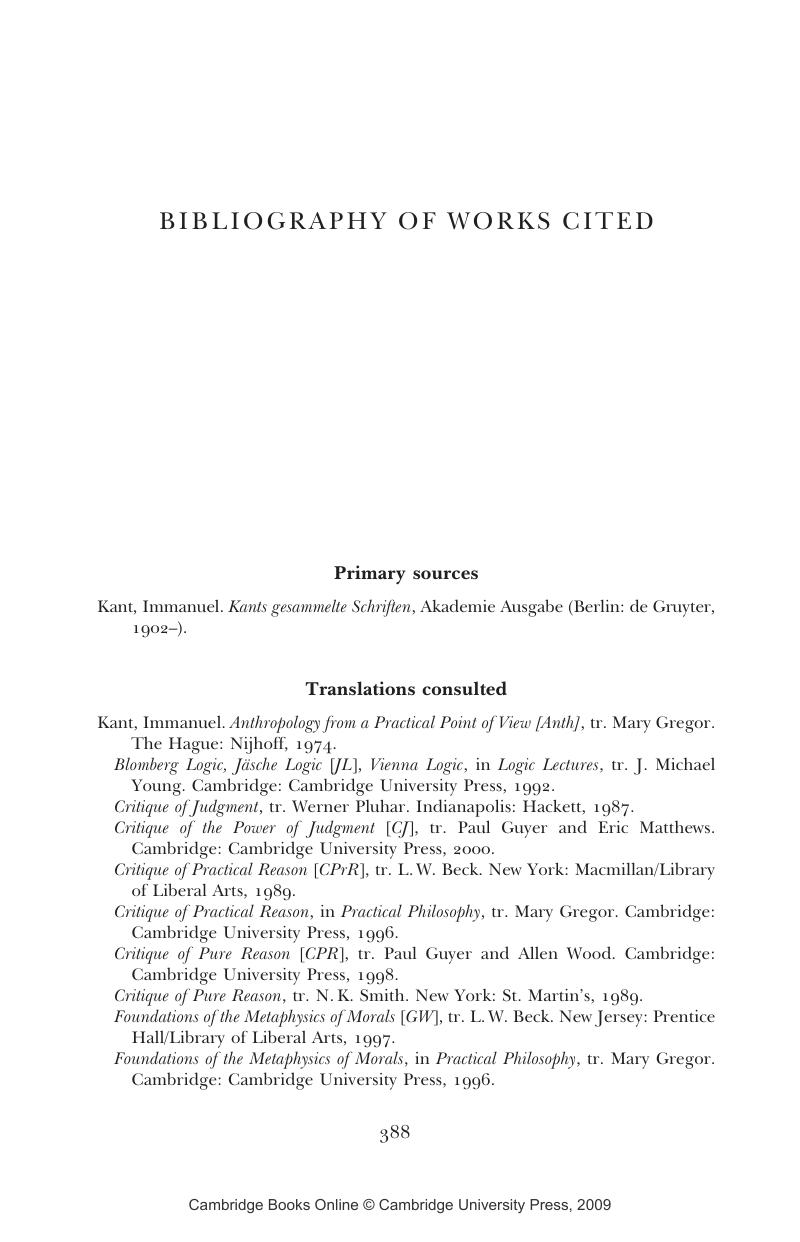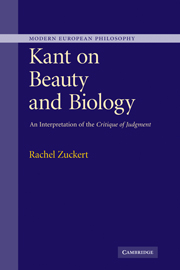Bibliography of works cited
Published online by Cambridge University Press: 22 September 2009
Summary

- Type
- Chapter
- Information
- Kant on Beauty and BiologyAn Interpretation of the 'Critique of Judgment', pp. 388 - 395Publisher: Cambridge University PressPrint publication year: 2007

